Paul Evans, George Nakashima Lead Soaring Prices for New Hope School at PIASA
- PARIS, France
- /
- May 02, 2016
On April 27, PIASA staged a sale devoted to American furniture from the 1940s to 1980s. The rigorous selection offered a fresh opportunity to explore the wealth of the American Craft movement via iconic works from the leading figures of the New Hope School: Paul Evans, George Nakashima and Philip & Kelvin Laverne.
Works by Paul Evans (1931-87) provoked tremendous demand as prices well clear of estimate paid tribute to the most important designer and sculptor of American Modernism. His majestic cabinet in copper, steel, brass and wood fetched €68,100 (lot 13, est. €38,000-45,000) and his one-off pair of fabric-upholstered resin armchairs from the 1970s soared to €83,000 (lot 12, est. €28,000-35,000).
Excellent results were also obtained for designs by George Nakashima (1905-90), ‘a father of the American craft movement.' His Modernist Free Edge sideboard in American walnut and raffia – his favourite materials – flew to €70,600 (lot 53, est. €25,000-35,000), while his Conoid bench in hickory and American walnut, a unique piece from 1961, claimed €54,100 (lot 54, est. €40,000-60,000).
Highlights from the 1950-70s included designs by Philip Laverne (1907-87) and his son Kelvin Laverne (born 1937), renowned for furniture fusing traditional style with innovative techniques – epitomized by a pair of Asian-style side-tables in brass, pewter and wood at €29,625 (lot 119, est. €10,000-15,000) and a circular coffee-table table from 1969 at €38,640 (lot 120, est. €10,000-15,000).
Excellent prices for T. H. Robsjohn-Gibbings (1905-76) included €52,800 for a pair of sideboards in Brazilian rosewood (lot 114, est. 20,000-30,000), while a 1950s walnut and cork coffee-table by Paul Frankl (1886-1958) reached €21,250 (lot 100, est. €10,000-15,000).
New Hope: The Creative Heart of American Design
The small town of New Hope, Pennsylvania, was at the heart of this creative adventure. A number of designers hailed from the region; others, like George Nakashima, settled there to work. Nakashima moved to New Hope in 1943 at the invitation of the architect Raymond Antonin, a former patron, who arranged his released from internment as a Japanese alien. Nakashima would carry out many of his most important designs on Antonin's New Hope estate.
American Design
American Designers succeeded in inventing a new aesthetic, imbued with their native culture, identity and dynamism. Pennsylvania, and especially New Hope, played host to a constellation of sculptors, designers, cabinet-makers and architects – giving rise to what would become known as the ‘New Hope School.'



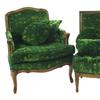

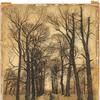


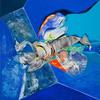
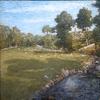
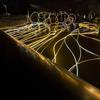

![Peter Paul Rubens (Flemish, 1577–1640), After Titian (Tiziano Vecelli) (Italian [Venetian], c. 1488–1576), Rape of Europa, 1628–29. Oil on canvas, 71 7/8 x 79 3/8 in. Peter Paul Rubens (Flemish, 1577–1640), After Titian (Tiziano Vecelli) (Italian [Venetian], c. 1488–1576), Rape of Europa, 1628–29. Oil on canvas, 71 7/8 x 79 3/8 in.](/images/c/e2/2e/Jan20_Rape_of_Europa100x100_c.jpg)
![Offering a Truce [Bested], 1895, is estimated to sell for between $1,300,000 and $1,800,000 on March 22, 2014, for The Russell: An Exhibition and Sale to Benefit the C.M. Russell Museum. Offering a Truce [Bested], 1895, is estimated to sell for between $1,300,000 and $1,800,000 on March 22, 2014, for The Russell: An Exhibition and Sale to Benefit the C.M. Russell Museum.](/images/c/a8/20/Dec10_Offering_a_Truce__Bested_300dpi100x100_c.jpg)

